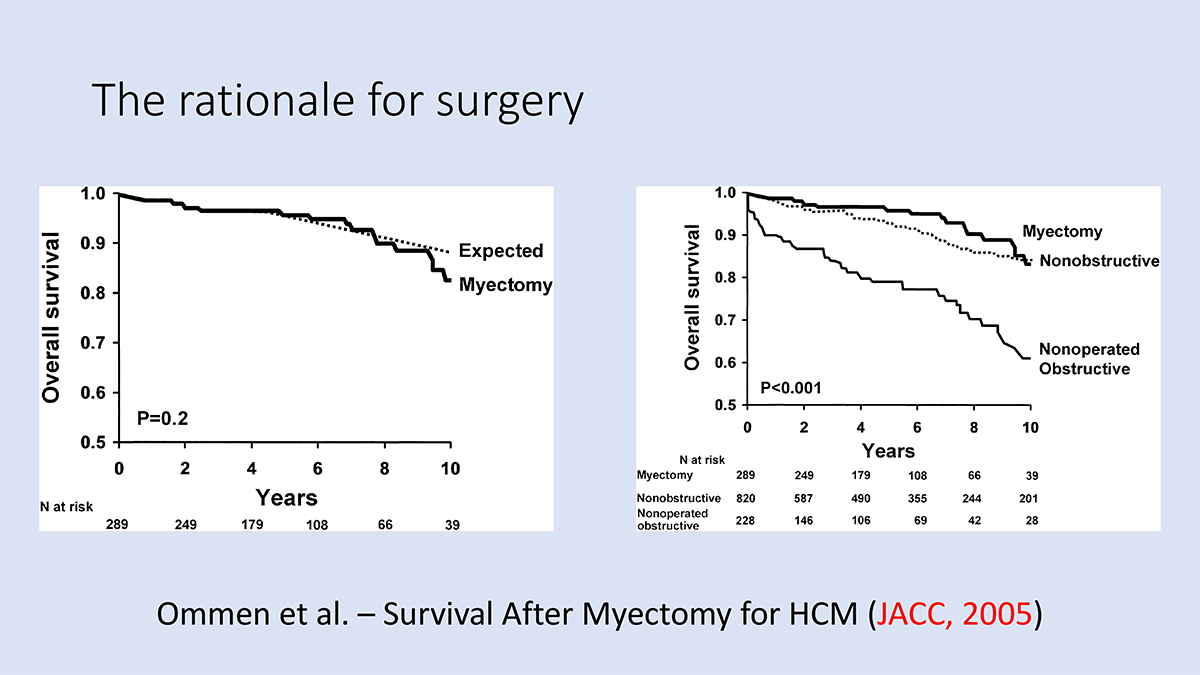Septal myectomy or Alcohol septal ablation? Why is the Septal myectomy recommended as a Gold-standard in the treatment of HOCM?
In a manner of speaking, in medicine the criticism is always appreciated because it helps the domain to develop gradually and to find new solutions and therapeutic pathways in the patients’ benefit.
In a field where minimally invasive and structural heart surgery has made considerable progress in the last decade, seeking the most convenient and patient-oriented solutions is justified in the context of assessing the risk-benefit ratio of the methods used.
The hypertrophic obstructive cardiomyopathy surgery is a supraspecialty, which is advisable to be performed in experienced centers, recommended by a representative volume of operated cases and by results reported to the unanimously accepted European and international average.
At the European Cardiomyopathy Center, Professor Lucian Dorobanțu, MD, PhD, Senior Cardiovascular Surgeon, performs the HOCM surgery through the septal myectomy technique toghether with a mitral valve and its subvalvular apparatus reconstruction which provides reconstruction of the left ventricular architecture with the benefit of mitral valve preservation, the center having over 98% mitral valve preservation rate, comparable to centers in Europe and worldwide.
Regarding the debate of choosing between the surgical option – Septal myectomy versus the Alcohol septal ablation interventional method-the scientific literature provides 2 basic principles:
- Surgical Septal myectomy/SM hasbecome the Gold standard, as the safest septal reduction procedure being addressed to most severely symptomatic HOCM patients when they are refractory to maximum medical treatment.
- Alcohol septal ablation/ASAis not preferred as the first-line option for such patients with a similar severity of symptoms or functional limitation, but rather as an alternative for selective cases: the patients of advanced age, patients with comorbidities being at high operative risk.
Are there anatomical benefits to practice Septal myectomy?
From a structural-anatomical point of view, septal myectomy performed together with a mitral valve and its subvalvular apparatus reconstruction provides a reconstructive surgery of the heart architecture. This technique, is therefore an effective strategy to reduce the gradient by removing the obstruction and reshaping the left ventricle and mitral valve architecture, confounding the restoration of normal cardiac hemodynamics.
Effectiveness of methods:
- In terms of method efficacy, post-procedurally, SM is superior to ASA by correcting and reshaping anatomical defects, including the coexisting mitral valve and its apparatus abnormalities, thus leading to reduced symptomatology and superior long-term outcomes, with patients returning to a life expectancy comparable to the general population.
- The repair of the coexisting mitral valve abnormalities and its subvalvular apparatus reconstruction it is impossible with ASA, a very important aspect when discussing of the young and adult population.
- In very selected cases such as the patients of advanced age, patients at high operative risk as a result of comorbidities, ASA could be an alternative.
Conclusions:
In an heterogeneous pathology such as HOCM, the European Cardiomyopathy Center team, coordinated by Professor Lucian Dorobanțu, MD, PhD, performs the surgical treatment of HOCM by one-piece-myectomy and reconstruction of the mitral and its subvalvular apparatus, a surgery to remodel the affected structure of the heart, a personalized surgery par excellence.
“It is very important that the interdisciplinary dialogue between specialists continue on this issue, in the constructive spirit of providing scientific arguments and evidence on the potential comparative risks and benefits of the 2 procedures, in order to find the optimal solution for patients suffering from hypertrophic obstructive cardiomyopathy (HOCM). Therefore, in this surgery it is essential to evaluate the quality of life of patients and the long-term outcomes.”
The development of interventional cardiology in recent years has brought into discussion this interventional technique for selected cases, which can be recommended to patients ineligible for septal myectomy or patients at substantial risk for open surgery. ASA can be considered the 2-nd therapeutic alternative, which patients intuitively prefer amidst anxiety, instead of the classical surgical approach, recommended to be done in specialized HOCM surgery centers as well.
*Despite an ongoing debate on this topic, another subject is likely to arise regarding the new Mavacamten medical treatment, which does not interfere with the mechanism of the mitral valve related abnormalities, being still under the evaluation in terms of its warnings and side effects.

